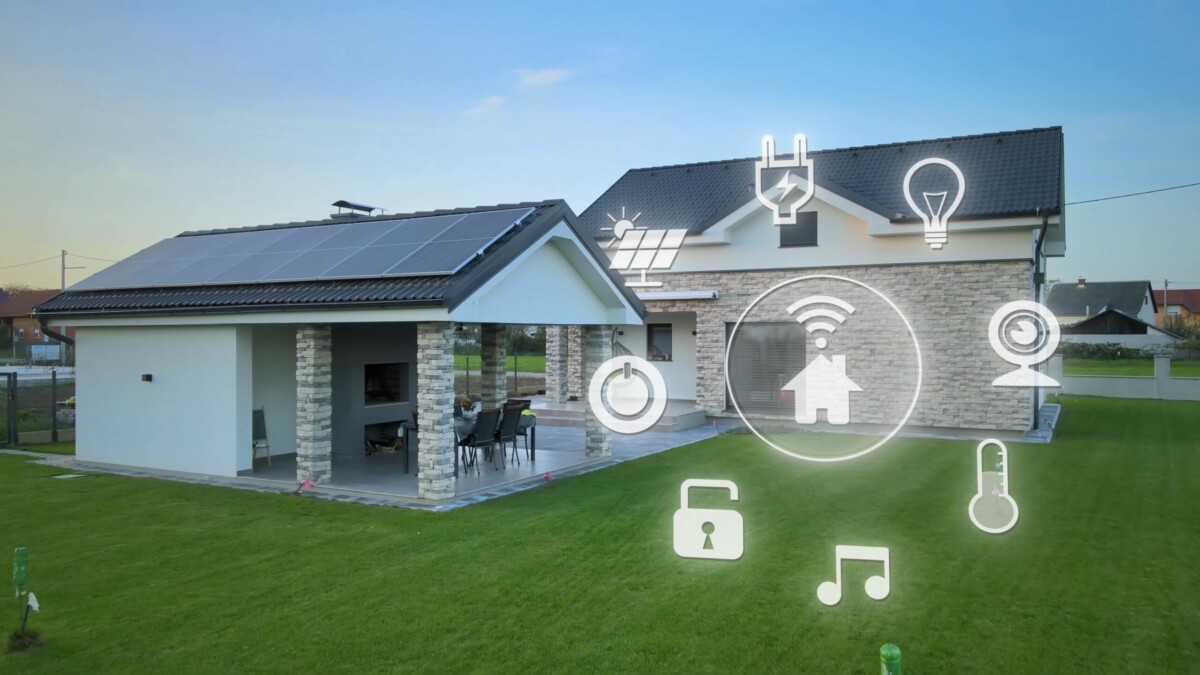French architect Le Corbusier once said that a house is a ‘machine for living.’ But given the number of devices running our homes today, it might be more apt to call it a ‘system for living’.
Many of us now rely on a battery of smart devices to tackle various household tasks: from answering the door to watering the grass to vacuuming the floor.
While they may not always connect – or, rather, interconnect – as seamlessly as we’d like, the steady accumulation of automated devices has transformed the home into something approaching a system.
But, as with all systems over time, the home is becoming more complex.

Sustainable Isn’t Simple
Last year saw a record number of solar panels, batteries, and heat pumps installed in British homes.
Many of us will take similar steps in the coming decades as we inch closer to the government’s net zero deadline (likewise with the adoption of electric vehicles and their attendant infrastructure).
However, green tech still has a long way to go before it is truly ready for mass adoption. Indeed, as many households are now discovering, it is often not as ‘smart’ as some of the other (cheaper) devices in our homes.
Take charging an EV. In some cases it can require as many as three different apps: the car app, the car charger app, and the energy provider app (if you want to take advantage of off-peak rates). Each one has to be individually set up and managed by the user, making for a fragmented – not to say frustrating – user experience.
Not only is the home rendered more complex as a result, but the complexity is largely borne by the user, not the devices.
And that’s just charging your car – if you add solar panels and a battery to the mix, the complexity of the home goes up yet further: more devices, more apps, more interconnections to be coordinated.
Compare this to other smart home technology, such as lighting. Though not uncomplicated to set up, once a lighting routine is in place very little is needed from the user. That’s because the process is automated by a hub, such as Google Home or Samsung SmartThings. However, of the big smart hub players, only Samsung currently offers support for green tech.
What’s needed is an interoperability standard that would allow devices from different manufacturers to be able to work together. However, Matter – the smart home connectivity standard that was introduced several years ago – does not yet support energy/green tech (and, by the sounds of it, still has a long way to go before it delivers on its original promise).
But maybe what’s really missing is some ‘systems thinking’: awareness that these devices do not exist in isolation but within a system i.e. the home.
And perhaps even more importantly: awareness of where the user sits within the system.

Bridging the Adoption Gap
Up to now, whether due to cost or confidence, most of those installing green tech could be described as ‘early adopters’. As the first ones through the door of new technology, early adopters tend to be more forgiving of any flaws or defects.
However, with more and more households looking to install solar panels and EV chargers, there is a real need to provide more joined-up user experiences.
Undoubtedly, ‘smarter’ devices will help with this – as will further advancements in artificial intelligence. But to get there we first need to understand the needs and goals of users, not to mention the pain points of those who’ve already made the leap.
And that’s where UX comes in.
By focusing on the needs of users, UX design can help to strip out unnecessary complexity from experiences (and, indeed, systems), and make products and services easier to use.
Given that ‘late majority’ adopters (i.e. mainstream users) are typically more demanding of new technology, it’s not too much of a leap to say that if we’re going to reach net zero, UX has its part to play.
It is only by spending time with users and understanding their context of use, that we can hope to bridge this adoption gap, and bring green tech into the mainstream.
Talk to us about your green tech challenge
